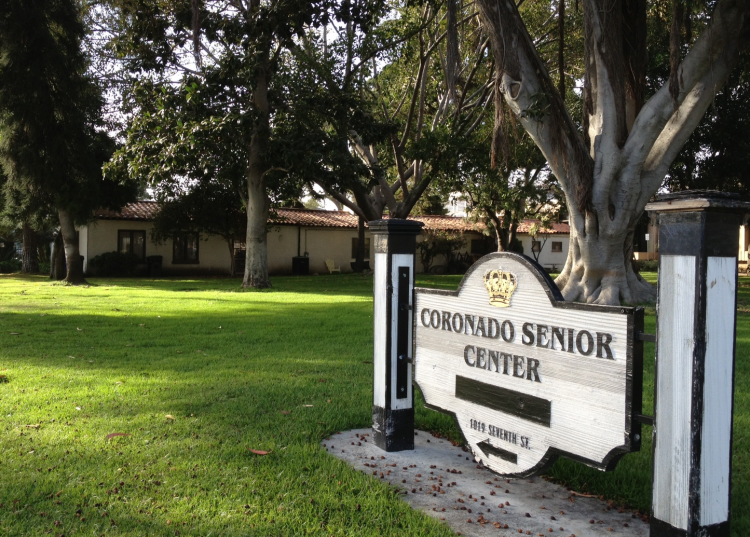
The Coronado Senior Association (CSA) has been under siege from some in the over-50 community. In the past two months, three CSA board members have resigned and senior citizen activists, Francette Roeder, Berie Grobe and Barry Austin have brought their concerns to the city council during oral communications. Austin has also written three letters to the Eagle-Journal blasting the group’s board of directors.
 The complaints are that CSA does not have a credible business plan and is misappropriating taxpayer money. “The CSA collects about $9,000 annually, 80% of which goes to salaries. Coronado taxpayers fund $34,200 of the deficit,” Austin wrote in a letter to the editor in September.
The complaints are that CSA does not have a credible business plan and is misappropriating taxpayer money. “The CSA collects about $9,000 annually, 80% of which goes to salaries. Coronado taxpayers fund $34,200 of the deficit,” Austin wrote in a letter to the editor in September.
CSA has two long-term employees, Linda Ferguson and Rick Burnett. Ferguson has been with the CSA for 20 years; Burnett for 14 years. It is these two employees who are at the heart of the dispute. Roeder, Grobe and Austin think they are superfluous. Others say they are irreplaceable.
“They are the pulse of the Senior Association,” said Caroline Haines, former CSA president. “You have to have a staff. If people don’t have skin in the game, they don’t show up.”
The group also challenges Austin’s claim that 80% of their funds go toward salaries. Besides staff, the group has a number of administrative costs – insurance, licenses, office supplies, bookkeeping services, and postage—that account for most of its expenses, according Prudy Stephens, who serves as the CSA’s interim president.
Austin doesn’t have anything against Ferguson or Burnett. “Both are good people,” he said. He just thinks they are unnecessary and that the work they do could be handled by volunteers.
He points to the Coronado Lawn Bowling Club (CLBC) as a business model the CSA should emulate. “[It] uses all of its funds to offer a variety of programs and contributes cash to the city to support operations of the Spreckels Center.” These are user fees. Tennis players using city courts pay them as do golfers at the Municipal Golf Course.
The CSA is not the only community organization funded by the city. Currently there are 16 nonprofits who receive an annual grant from the city. Many use the money to pay staff salaries. For many years the CSA was one of those recipients. This year the city decided to include the money as a line item in the Recreation Department’s budget.
Without city funding, the CSA could not pay for staff. It only earns $1,200 from membership. Fund-raising has been limited to one donor letter than went out earlier this year and a donate button the CSA webpage. “This isn’t financially sustainable,” said Grobe, who heads the CLBC and was one of the CSA broad members who left.
There has always been some tension between the CLBC and CSA. Lawn bowlers resented having to join the CSA to play their sport. When the city explored replacing the old senior center building, it was the lawn bowlers who wanted something truly spectacular. Many CSA members simply wanted to spruce up the original building.

The city council listened to the lawn bowlers and the seniors who wanted a high-end facility. It dipped into the Harpst Fund and broke ground.
Having spent millions on the new facility, the city wanted to make sure it received a return on its investment. It developed its own programs, hired its own staff and created its own governing board. The programs reflect the interest of active, vibrant seniors: tai chi, cardio dance and yoga, art enrichment and cooking classes. Not only are these more in line with the interests of today’s seniors, they are, according to Grobe, of a much higher quality ”than those offered by the CSA.”
CSA programs are not as dynamic, but they are not intended to be. “We’re here for a different senior population. People who live alone, are in poor health or are not rich,” Haines said. For those seniors, CSA offers card games, a movie night, a place to come and make new friends. Having two familiar faces at a desk to greet those members and help them feel at home is paramount. “They provide compassion and respect to members and guests –specialized skills which cannot be taught,” said Stephens.
For how long is debatable. Grobe thinks that in the not too distant future the CSA will eventually have to let the staff go. “It costs $75 thousand a year to pay for two part time staff,” she said. “I worked in human resources. I know.”
By its own accounts, the CSA doesn’t have the money. Without a major fundraising effort, it is not likely to have it. “They sent out a letter to the members asking for donations, but nothing came of it,” Grobe said. Haines admits that the group needs to do more aggressive fundraising. “We will in time,” she said. For now she wishes that “everyone would just chill.”




